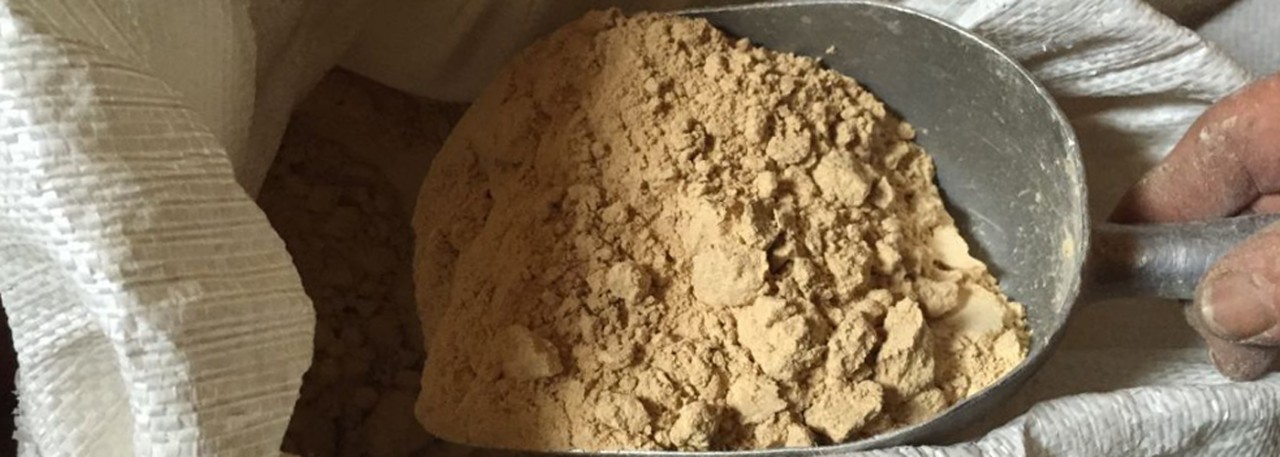.png.transform/rendition-xs/image_image%20(1).png)
Gofio Canario PGI
Gofio Canario is the product obtained on the Canary archipelago from milled and roasted cereals to which sea salt may be added. Gofio may sometimes contain added legumes, which undergo the same treatment as the cereals.
Tasting notes
Gofio Canario is a powdery solid with a floury appearance and particles of a similar size to those obtained in wholegrain flour.
It has the following organoleptic characteristics:
- The color of gofio varies from ivory yellow, honey tones and through to a dark reddish hue, depending on the roasting time and the material used in its preparation.
- Gofio may have toasted, vegetable and nutty aromas of medium to high intensity, depending on the raw materials used in its production.
- In the mouth it is very smooth and adhesive, with flavors reflecting the level of roasting, such as mocha, coffee or freshly-baked sponge cake.
- It feels very soft and adhesive to the touch, as would be expected from the size of the granules.
Other notes
Chemical properties:
- Protein: minimum 7.0%
- Crude fiber 1.5%
- Carbohydrates: minimum 45%
- Fat: maximum 5%.
Production / Processing method
Cleaning:
Consists of cleaning the cereals and legumes used as raw ingredients in order to remove traces of leaves and stalks, split grains and other material unrelated to the crop. Cleaning is done either mechanically by using air-assisted filters and mechanical sieves or manually (using wire sieves).
Roasting and cooling:
The raw material is placed in roasting ovens, which produce the desired amount of heat without exceeding 200°C. To enable the roasted product to cool down to room temperature it is left in sacks or in containers known as "cooling boxes". The cooling process can be speeded up by using open conveyor belts or forced aeration.
Milling:
It is the fundamental part of making gofio. The roasted grains are taken to the milling area, where they are finely ground in mills. The end of this stage is determined by the miller, who tests the product by hand. When the correct level of smoothness and adhesiveness typical of gofio has been achieved, the milling process is deemed to be complete. Organoleptic control is carried out by the master miller before packaging and is recorded.
Packaging:
The gofio obtained is stored in containers until it is ready to be packaged, using either automatic or semi-automatic packaging machines, or manually.
Package labeling may display the island and area where the gofio was produced, plus the origin of the raw material. If the gofio was produced using stone mills, the product label may use the words "artisan" or "produced in a stone mill".
Geography / Relief and climate
The Canary archipelago is situated opposite the north-west coast of Africa. The location, together with the effect of the trade winds and the cold Canary Current, results in a climate classified as humid subtropical, with mild temperatures and scarce rainfall. Temperatures in the Canaries remain largely the same all year round. On the coasts, average temperatures are around 20°C, but they drop noticeably as altitude increases and show greater variations during the day.
Regulatory Council
Canary Island Institute of Agro-Food Quality (ICCA)
Avda. Buenos Aires, 5 - Edif. Tres de Mayo - Planta 4ª
38071 Santa Cruz de Tenerife (Canary Islands)
Tel.: (+34) 922 592 735
icca.cagpa@gobiernodecanarias.org
www.gobiernodecanarias.org/agricultura/icca/calidad/Gofio.html
Sources:
- Spanish Ministry of Agriculture
Milling is the fundamental part of making gofio.


Santa Cruz de Tenerife (Canary Islands)
